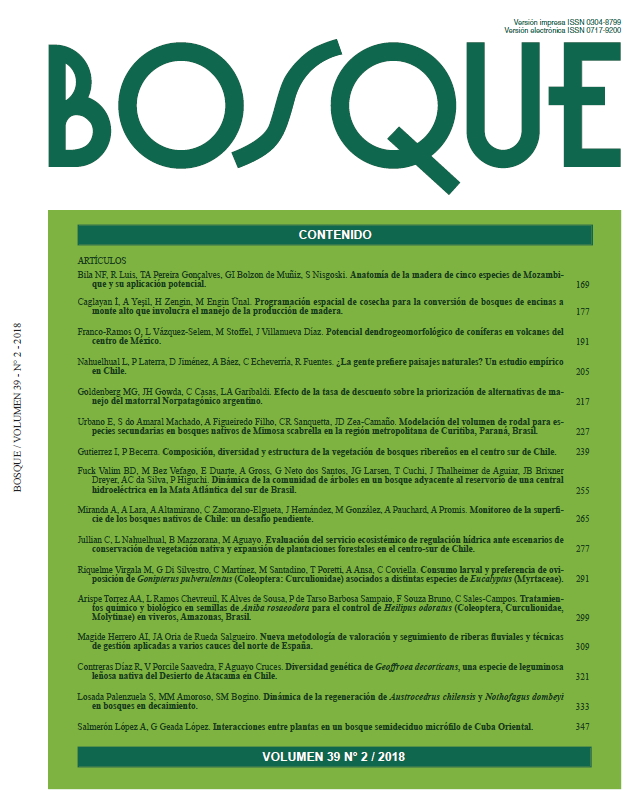Interactions among plants in a coastal dry forest in east Cuba
Main Article Content
Abstract
In the microphyll semi-deciduous forest of the Ecological Reserve Siboney Juticí, stress conditions have been conditioned by anthropogenic disturbances, together with climatic and edaphic characteristic. The study develops a method to show the existence of interactions among functional types, species and life class, such as evaluating its magnitude in an unequally disturbed site. The χ2 distribution was applied, considering all possible combinations of species and their life class (seedling, sapling and adult) in the contingence tables. An equation was obtained for an index that made possible to estimate the type (facilitation or competence) and magnitude of the detected interaction. Facilitation and competence interactions were verified. Facilitation was frequent in highly and moderately disturbed sites, and competence in low perturbed sites. Facilitator species correspond fundamentally with the functional
type of spreaders and the facilitated were, fundamentally, seedlings and saplings of colonizers species. Some stabilizer species were also documented as facilitators. The facilitator character of some stabilizer species over seedling and sapling of colonizer species in low perturbed sites may be contributing to the stability of these states of the system, in spite of the verified increasing of competence among adult individuals of all functional types in these sites.

